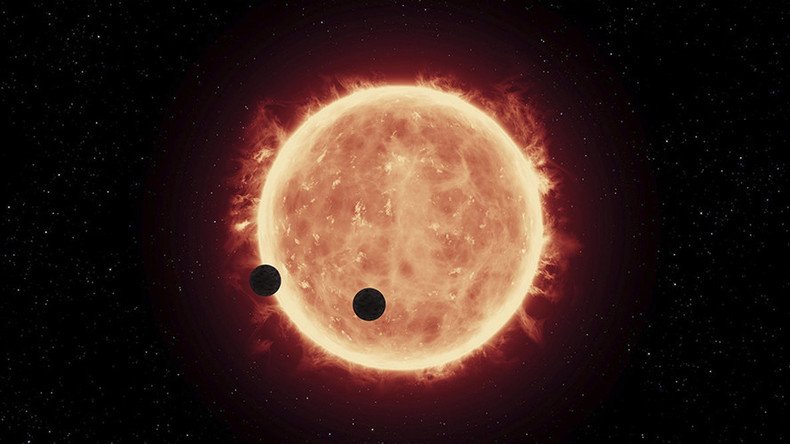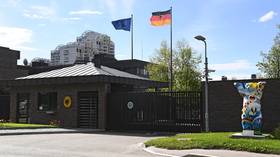Astronomers find evidence of water on TRAPPIST-1 exoplanets

The search for life on other planets is gaining fresh impetus with new research suggesting planets in the TRAPPIST-1 system could harbor substantial amounts of water.
The dwarf star TRAPPIST-1 is more than 39 light years from Earth and was discovered along with three orbiting Earth-sized planets in 2015. In February this year, four more exoplanets were found orbiting the star, with three thought to lie in the ‘habitable zone.’
In a study published in the Astronomical Journal, an international team of researchers led by Swiss astronomer Vincent Bourrier of the University of Geneva Observatory studied the effect of ultraviolet light on the atmosphere of all seven of the system’s exoplanets.
'Fascinating discoveries': #NASA telescope reveals secrets of #TRAPPIST1 exoplanets https://t.co/1fYCqDqclepic.twitter.com/PEV9dLVybt
— RT (@RT_com) May 23, 2017
Using the Hubble telescope, the team found evidence of atmospheric water vapor after the observatory picked up signs of hydrogen gas clouds around the planets. Scientists believe this water vapor is a result of intense heat caused by exposure to ultraviolet radiation.
The team concluded that TRAPPIST-1b and 1c, the two innermost planets, are the most dry having lost up to 20 Earth-oceans-worth of water over the last 8 billion years. The ‘habitable zone’ planets, designated e, f and g, are thought to have lost a lot less moisture, meaning they likely still have a large store.
READ MORE: ‘Glowing’ water in exoplanet’s atmosphere discovered by NASA (VIDEO)
Writing in the Astronomical Journal, Bourrier said: “What we found tells us that probably the [three] inner planets are not good planets to search for life.”
Bourrier suggested that the launch of James Webb Space Telescope, the successor to Hubble, in October 2018 could make up for the lack of conclusive data about the atmospheres of the planets.
What exactly did they find? NASA to reveal latest in hunt for 'another Earth' beyond our solar system https://t.co/nOQ7FMI0Na
— RT (@RT_com) June 14, 2017
"While our results suggest that the outer planets are the best candidates to search for water with the upcoming James Webb Space Telescope, they also highlight the need for theoretical studies and complementary observations at all wavelengths to determine the nature of the TRAPPIST-1 planets and their potential habitability,” he said.
READ MORE: Europe’s Space Agency approves alien-hunt project
Speaking to the Guardian, astrophysicist Ignas Snellen of Leiden Observatory in the Netherlands said the project needed more data to determine if the planets contain water.
“We are all very eager to learn more about the possible climates on these planets, and in particular whether they could host liquid water,” said Snellen. “Personally, I think that you can make all the calculations you want, but in the end we need measurements.”
“If one or more of these planets turn out to contain water it will be an enormous breakthrough,” he added.












